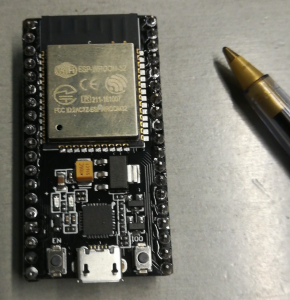My colleague Heikki Hietala experimented with ESP32. He could connect it to Eduroam, the world wide free WiFi network for students.
Heikki used it for building a network controlled version of his morse moai, but you could use ESP32 to build robots and Internet of Things.
ESP32 is Arduino compatible microcontroller, making it very easy to program. It could work nicely with IoT Rapid Prototyping Laboratory Setup I co-developed with Kimmo Karvinen.
According to the ESP32 datasheet, it has
- WiFi – improved from ESP8266-12E, this one can connect to Eduroam and enterpricy networks. Eduroam (WPA2 PEAP) worked in Heikki’s tests.
- Bluetooth – could make it easier to enter WiFi password without reflashing
- Analog to digital converter – this measures voltage. As we explain in Make: Sensors, most simple sensors look like resistors to code, so this is a key feature.
- Digital to analog converter (output any voltage 0 V – 3.3 V continuously)
- Temperature sensor
- Hall effect (magnetic) sensor
- Capacitive touch sensor
- I2C and SPI: these are industry standard protocols for accessing sensors. We used I2C in our Sun Sensor design for Aalto-1, Finland’s first satellite.
Read Heikki’s ESP32 notes with sample code.
Updated: minor improvements to text and links. Corrected price.
